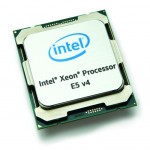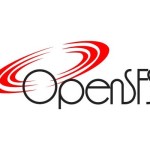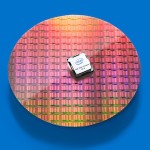Today Intel announced new technologies, investments and industry collaborations that make it easier for any business to harness the power of the cloud. The news featured the new Intel Xeon processor E5-2600 v4 product family (Broadwell), collaborations with leading cloud software and solution providers, and Intel’s first 3D NAND SSDs optimized for cloud and enterprise workloads.
Archives for March 2016
OpenSFS Releases Lustre 2.8.0 for LUG 2016 Conference
Today the Open Scalable File Systems (OpenSFS) community announced the release of Lustre 2.8.0, the fastest and most scalable parallel file system. OpenSFS, founded in 2010 to advance Lustre development, is the premier non-profit organization promoting the use of Lustre and advancing its capabilities through coordinated releases of the Lustre file system.
Podcast: Intel Moves HPC Forward with Broadwell Family of Xeon Processors
In this podcast, Rich Brueckner interviews Hugo Saleh, Director of Marketing for the Intel High Performance Computing Platform Group. They discuss the new Intel® Xeon® processor E5-2600 v4 product family, based upon the Broadwell microarchitecture, and the first processor within Intel® Scalable System Framework (Intel® SSF). Hugo describes how the new processors improve HPC performance and examine the impact of Intel® SSF on vastly different procurements ranging from the massive 200 Petaflops Aurora system to small and large enterprise clusters plus scientific systems.
Video: Huawei Powers Efficient and Scalable HPC
“Huawei focuses on R&D of IT infrastructure, cooling solutions, software integration, and provides end-to-end HPC solution by building ecosystems with partners. Huawei help customers from different sectors and fields, solving challenges and problems with computing resources, energy expenditure and business needs. This presentation will introduce how Huawei brings fresh technologies to next-generation HPC solutions for more innovation, higher efficiency and scale, as well as presenting our best practices for HPC.”
Allinea Taps the Power of GPUs for High Performance Code
Today Allinea announced plans to showcase its software tools for developing and optimizing high performance code at the GPU Technology Conference April 4-7 in San Jose. The company will highlight the best practices required to unleash the potential performance within the latest generation of NVIDIA GPUs for a wide range of software applications.
Reducing the Time to Science with Efficient Clouds
In this special guest feature from Scientific Computing World, Dr Bruno Silva from The Francis Crick Institute in London writes that new cloud technologies will make the cloud even more important to scientific computing. “The emergence of public cloud and the ability to cloud-burst is actually the real game-changer. Because of its ‘infinite’ amount of resources (effectively always under-utilized), it allows for a clear decoupling of time-to-science from efficiency. One can be somewhat less efficient in a controlled fashion (higher cost, slightly more waste) to minimize time-to-science when required (in burst, so to speak) by effectively growing the computing estate available beyond the fixed footprint of local infrastructure – this is often referred to as the hybrid cloud model. You get both the benefit of efficient infrastructure use, and the ability to go beyond that when strictly required.”
Jeff Squyres on Building Community at OpenHPC
“As a community, we are excited about enabling HPC for everyone. If OpenHPC can really make it so easy to install HPC systems that more people join the ecosystem – as users, system administrators, resource managers, or developers – we all win.”
European Research Infrastructure Launched for Human Brain Project
The Human Brain Project (HBP) is developing a shared European research infrastructure with the aim of examining the organization of the brain using detailed analyses and simulations and thus combating neurological and psychiatric disorders. For this purpose, the HBP is creating new information technologies like neurosynaptic processors which are based on the principles governing how the human brain works.
Tutorial on the EasyBuild Framework
Kenneth Hoste from the University Ghent presented this tutorial at the Switzerland HPC Conference. “One unnecessarily time-consuming task for HPC user support teams is installing software for users. Due to the advanced nature of a supercomputing system (think: multiple multi-core modern microprocessors (possibly next to co-processors like GPUs), the availability of a high performance network interconnect, bleeding edge compilers & libraries, etc.), compiling the software from source on the actual operating system and system architecture that it is going to be used on is typically highly preferred over using readily available binary packages that were built in a generic way.
PSC Powers 3D-Reconstruction of Excitatory Visual Neuron Wiring
With help from the Pittsburgh Supercomputer Center, an international team of researchers has published the largest network to date of connections between neurons in the cortex, where high-level processing occurs, and have revealed several crucial elements of how networks in the brain are organized. The results are published this week in the journal Nature.












